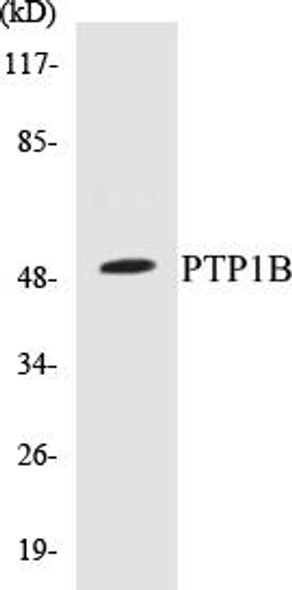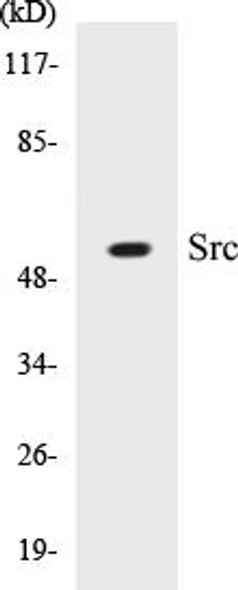Description
NFAT3 Colorimetric Cell-Based ELISA Kit
The NFAT3 Colorimetric Cell-Based ELISA Kit from Assay Genie is specifically designed for the accurate detection of NFAT3 levels in cell lysates and tissue homogenates. This kit offers high sensitivity and specificity, providing researchers with reliable and reproducible results for a variety of research applications.NFAT3, also known as Nuclear Factor of Activated T-cells 3, is a key transcription factor involved in regulating gene expression in immune cells, playing a critical role in immune response and inflammation. Abnormal NFAT3 expression has been implicated in various diseases, including autoimmune disorders, cancer, and cardiovascular diseases, making it a valuable biomarker for studying these conditions and developing potential therapeutic interventions.
With its user-friendly protocol and comprehensive components, the NFAT3 Colorimetric Cell-Based ELISA Kit is an essential tool for researchers looking to explore the role of NFAT3 in health and disease. Order yours today from Assay Genie and unlock new insights into NFAT3 biology.
| Product Name: | NFAT3 Colorimetric Cell-Based ELISA |
| Product Code: | CBCAB00335 |
| ELISA Type: | Cell-Based |
| Target: | NFAT3 |
| Reactivity: | Human, Mouse |
| Dynamic Range: | > 5000 Cells |
| Detection Method: | Colorimetric 450 nmStorage/Stability:4°C/6 Months |
| Format: | 96-Well Microplate |
The NFAT3 Colorimetric Cell-Based ELISA Kit is a convenient, lysate-free, high throughput and sensitive assay kit that can detect NFAT3 protein expression profile in cells. The kit can be used for measuring the relative amounts of NFAT3 in cultured cells as well as screening for the effects that various treatments, inhibitors (ie siRNA or chemicals), or activators have on NFAT3.
Qualitative determination of NFAT3 concentration is achieved by an indirect ELISA format. In essence, NFAT3 is captured by NFAT3-specific primary antibodies while the HRP-conjugated secondary antibodies bind the Fc region of the primary antibody. Through this binding, the HRP enzyme conjugated to the secondary antibody can catalyze a colorimetric reaction upon substrate addition. Due to the qualitative nature of the Cell-Based ELISA, multiple normalization methods are needed:
| 1. | A monoclonal antibody specific for human GAPDH is included to serve as an internal positive control in normalizing the target absorbance values. |
| 2. | Following the colorimetric measurement of HRP activity via substrate addition, the Crystal Violet whole-cell staining method may be used to determine cell density. After staining, the results can be analysed by normalizing the absorbance values to cell amounts, by which the plating difference can be adjusted. |
| Database Information: | Gene ID: 4776, UniProt ID: Q14934, OMIM: 602699, Unigene: Hs.77810 |
| Gene Symbol: | NFATC4 |
| Sub Type: | None |
| UniProt Protein Function: | NFAT3: a transcription factor that plays a role in the inducible expression of cytokine genes in T cells, especially in the induction of the IL-2 and IL-4. Also control gene expression in embryonic cardiac cells. Could regulate not only the activation and proliferation but also the differentiation and programmed death of lymphoid and nonlymphoid cells. Highly expressed in placenta, lung, kidney, testis and ovary. Weakly expressed in spleen and thymus. Not expressed in peripheral blood lymphocytes. 23 alternatively spliced isoforms of the human protein hve been reported. |
| UniProt Protein Details: | Protein type:Transcription factor; DNA-binding Chromosomal Location of Human Ortholog: 14q11.2 Cellular Component: cytoplasm; cytosol; intermediate filament cytoskeleton; nucleus; transcription factor complex Molecular Function:peroxisome proliferator activated receptor binding; protein binding; transcription coactivator activity; transcription factor binding Biological Process: calcineurin-NFAT signaling pathway; cellular respiration; DNA damage response, signal transduction resulting in induction of apoptosis; heart development; inflammatory response; muscle cell development; negative regulation of dendrite morphogenesis; negative regulation of transcription from RNA polymerase II promoter; patterning of blood vessels; positive regulation of transcription from RNA polymerase II promoter; positive regulation of tumor necrosis factor production; regulation of synaptic plasticity; smooth muscle cell differentiation; transcription from RNA polymerase II promoter |
| NCBI Summary: | This gene encodes a member of the nuclear factor of activated T cells (NFAT) protein family. The encoded protein is part of a DNA-binding transcription complex. This complex consists of at least two components: a preexisting cytosolic component that translocates to the nucleus upon T cell receptor stimulation and an inducible nuclear component. NFAT proteins are activated by the calmodulin-dependent phosphatase, calcineurin. The encoded protein plays a role in the inducible expression of cytokine genes in T cells, especially in the induction of interleukin-2 and interleukin-4. Alternative splicing results in multiple transcript variants. [provided by RefSeq, Jan 2014] |
| UniProt Code: | Q14934 |
| NCBI GenInfo Identifier: | 215274090 |
| NCBI Gene ID: | 4776 |
| NCBI Accession: | Q14934.2 |
| UniProt Secondary Accession: | Q14934,B4DDG5, B4DY55, B5B2U7, B5B2U8, B5B2U9, B5B2V0 B5B2V1, B5B2V2, B5B2V3, B5B2V4, B5B2V5, |
| UniProt Related Accession: | Q14934 |
| Molecular Weight: | 8,950 Da |
| NCBI Full Name: | Nuclear factor of activated T-cells, cytoplasmic 4 |
| NCBI Synonym Full Names: | nuclear factor of activated T-cells 4 |
| NCBI Official Symbol: | NFATC4 |
| NCBI Official Synonym Symbols: | NFAT3; NF-AT3; NF-ATC4 |
| NCBI Protein Information: | nuclear factor of activated T-cells, cytoplasmic 4 |
| UniProt Protein Name: | Nuclear factor of activated T-cells, cytoplasmic 4 |
| UniProt Synonym Protein Names: | T-cell transcription factor NFAT3; NF-AT3 |
| Protein Family: | Nuclear factor of activated T-cells |
| UniProt Gene Name: | NFATC4 |
| UniProt Entry Name: | NFAC4_HUMAN |
| Component | Quantity |
| 96-Well Cell Culture Clear-Bottom Microplate | 2 plates |
| 10X TBS | 24 mL |
| Quenching Buffer | 24 mL |
| Blocking Buffer | 50 mL |
| 15X Wash Buffer | 50 mL |
| Primary Antibody Diluent | 12 mL |
| 100x Anti-Phospho Target Antibody | 60 µL |
| 100x Anti-Target Antibody | 60 µL |
| Anti-GAPDH Antibody | 60 µL |
| HRP-Conjugated Anti-Rabbit IgG Antibody | 12 mL |
| HRP-Conjugated Anti-Mouse IgG Antibody | 12 mL |
| SDS Solution | 12 mL |
| Stop Solution | 24 mL |
| Ready-to-Use Substrate | 12 mL |
| Crystal Violet Solution | 12 mL |
| Adhesive Plate Seals | 2 seals |
The following materials and/or equipment are NOT provided in this kit but are necessary to successfully conduct the experiment:
- Microplate reader able to measure absorbance at 450 nm and/or 595 nm for Crystal Violet Cell Staining (Optional)
- Micropipettes with capability of measuring volumes ranging from 1 µL to 1 ml
- 37% formaldehyde (Sigma Cat# F-8775) or formaldehyde from other sources
- Squirt bottle, manifold dispenser, multichannel pipette reservoir or automated microplate washer
- Graph paper or computer software capable of generating or displaying logarithmic functions
- Absorbent papers or vacuum aspirator
- Test tubes or microfuge tubes capable of storing ≥1 ml
- Poly-L-Lysine (Sigma Cat# P4832 for suspension cells)
- Orbital shaker (optional)
- Deionized or sterile water
*Note: Protocols are specific to each batch/lot. For the correct instructions please follow the protocol included in your kit.
| Step | Procedure |
| 1. | Seed 200 µL of 20,000 adherent cells in culture medium in each well of a 96-well plate. The plates included in the kit are sterile and treated for cell culture. For suspension cells and loosely attached cells, coat the plates with 100 µL of 10 µg/ml Poly-L-Lysine (not included) to each well of a 96-well plate for 30 minutes at 37°C prior to adding cells. |
| 2. | Incubate the cells for overnight at 37°C, 5% CO2. |
| 3. | Treat the cells as desired. |
| 4. | Remove the cell culture medium and rinse with 200 µL of 1x TBS, twice. |
| 5. | Fix the cells by incubating with 100 µL of Fixing Solution for 20 minutes at room temperature. The 4% formaldehyde is used for adherent cells and 8% formaldehyde is used for suspension cells and loosely attached cells. |
| 6. | Remove the Fixing Solution and wash the plate 3 times with 200 µL 1x Wash Buffer for five minutes each time with gentle shaking on the orbital shaker. The plate can be stored at 4°C for a week. |
| 7. | Add 100 µL of Quenching Buffer and incubate for 20 minutes at room temperature. |
| 8. | Wash the plate 3 times with 1x Wash Buffer for 5 minutes each time. |
| 9. | Add 200 µL of Blocking Buffer and incubate for 1 hour at room temperature. |
| 10. | Wash 3 times with 200 µL of 1x Wash Buffer for 5 minutes each time. |
| 11. | Add 50 µL of 1x primary antibodies (Anti-NFAT3 Antibody and/or Anti-GAPDH Antibody) to the corresponding wells, cover with Parafilm and incubate for 16 hours (overnight) at 4°C. If the target expression is known to be high, incubate for 2 hours at room temperature. |
| 12. | Wash 3 times with 200 µL of 1x Wash Buffer for 5 minutes each time. |
| 13. | Add 50 µL of 1x secondary antibodies (HRP-Conjugated AntiRabbit IgG Antibody or HRP-Conjugated Anti-Mouse IgG Antibody) to corresponding wells and incubate for 1.5 hours at room temperature. |
| 14. | Wash 3 times with 200 µL of 1x Wash Buffer for 5 minutes each time. |
| 15. | Add 50 µL of Ready-to-Use Substrate to each well and incubate for 30 minutes at room temperature in the dark. |
| 16. | Add 50 µL of Stop Solution to each well and read OD at 450 nm immediately using the microplate reader. |
(Additional Crystal Violet staining may be performed if desired – details of this may be found in the kit technical manual.)






